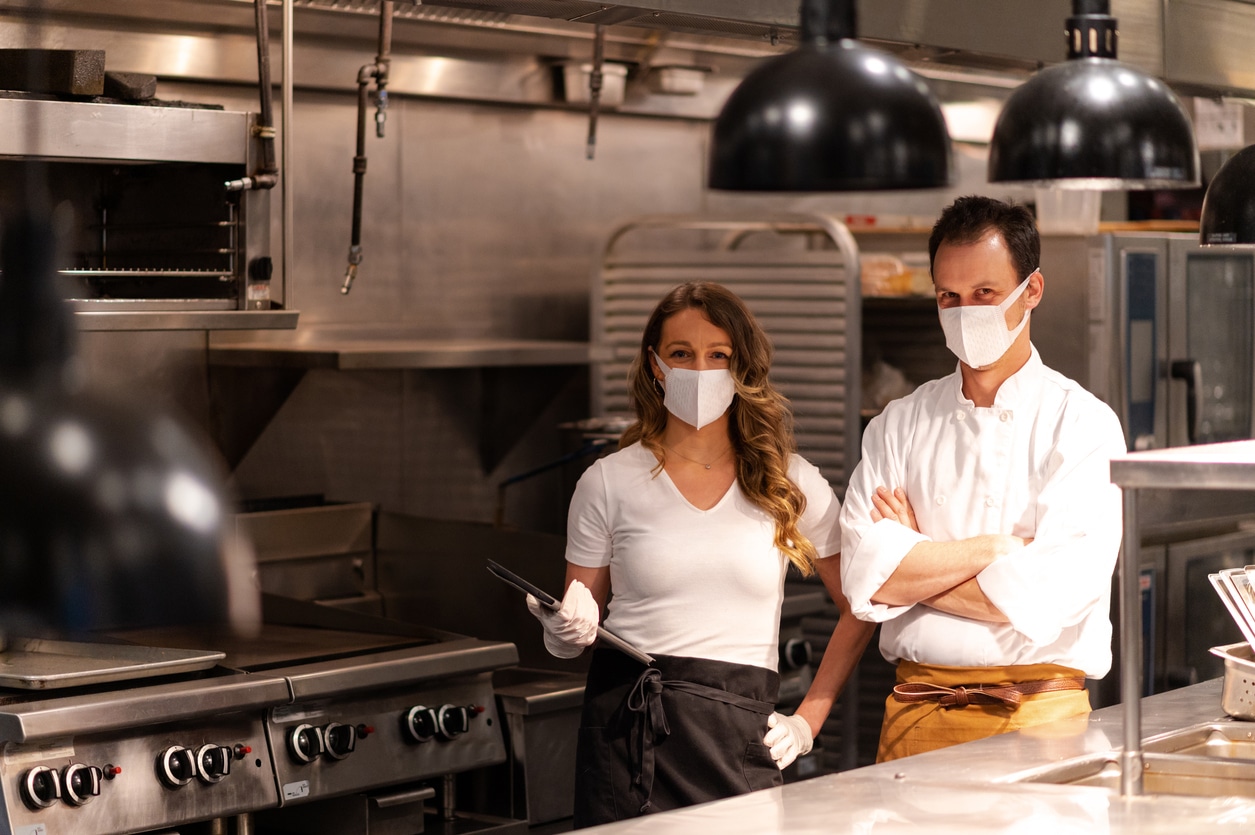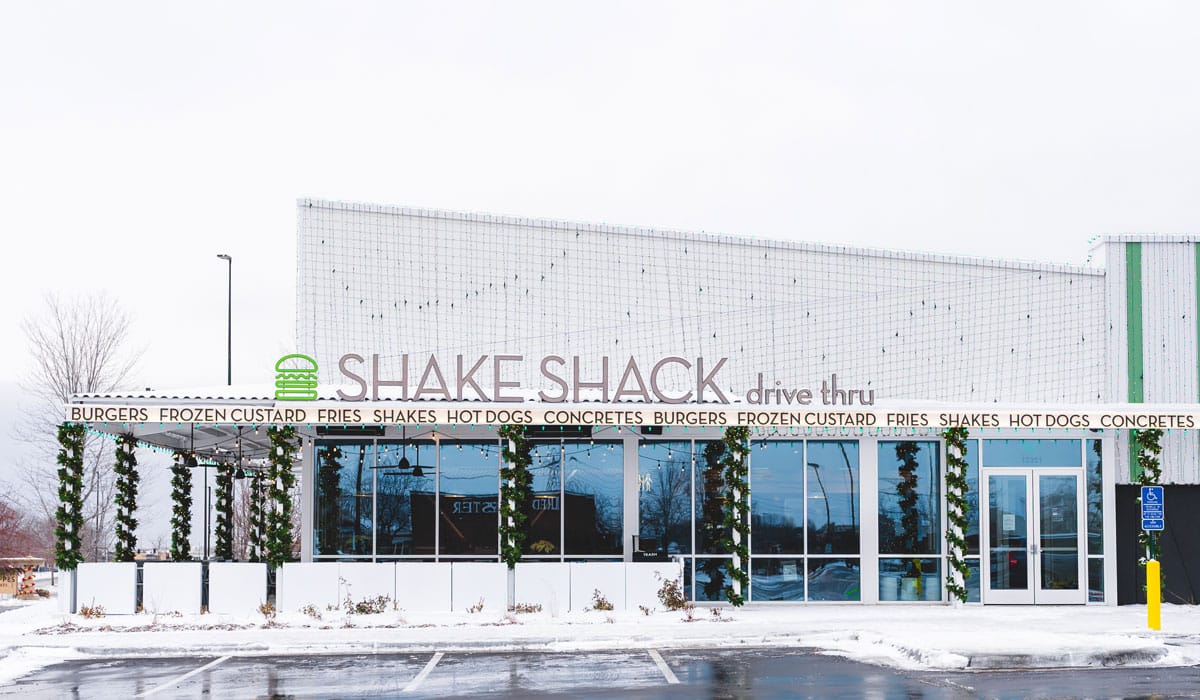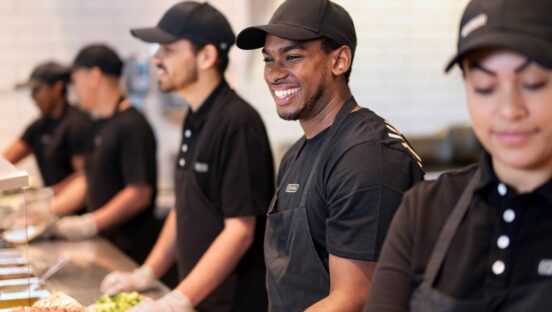Shake Shack opened its first drive-thru in late 2021, and early numbers show why the fast casual is leaning so heavily into the order channel.
In the past four months, average weekly sales per restaurant trended above $80,000, equating to a $4.16 million annualized AUV. It’s higher than Shake Shack’s Q2 systemwide average, $76,000, which is the best mark since COVID began. The drive-thru is mixing 50 percent, consistent with Shake Shack’s targets. The chain didn’t provide frequency data, but CEO Randy Garutti did share that because of drive-thru convenience, consumers appear to be coming more often than a traditional suburban format.
Granted, it’s still early days. Six are open (Minnesota, Missouri [two locations], Florida, Michigan, and Colorado.), and at least four more are scheduled to debut before the year is over. Garutti also noted drive-thru units haven’t always been fully staffed and that a few of them opened in the thick of Omicron during December and January.
“So all the data is brand new. We obviously want to be careful not to share too much data at this early stage, but we continue to be encouraged about the AUV potential, number one, which is what I led with in my comments, as well as the long-term profit and return metrics that we think we can get out of this model,” Garutti said during the company’s Q2 earnings call. “I think it’s going to open up new real estate opportunities all over the country for us, could increase our longer-term [total addressable market], and we’re really excited about it.”
READ MORE: Take a Tour of Shake Shack’s First Drive-Thru
All that to say, the potential seems promising, but more to come as Shake Shack learns how to fit the prototype in certain markets, what layout should look like, and how food flows through the kitchen. Some have been open for eight months, others just one month, meaning, Shake Shack still has to determine what seasonality looks like for these stores. Garutti said it’s difficult project where AUV will land in the long run, but the chain fully expects for it to be a significant premium compared to what a traditional Shake Shack would earned in a similar area. Financial services firm BTIG expects drive-thru stores to earn 15–20 percent higher average weekly sales than their non-drive-thru counterparts.
The CEO will be the first to admit that Shake Shack has much to study around drive-thru. He knows the chain will get some things right, but other things wrong as it builds more.
“Even in the Shacks, the six that we have, there’s lots of things we wish we did different, and that will go into the learning of the next batch,” Garutti said. “And that’s why we’re saying today how significant our commitment will be to these 10. And the next 10, 15 at least for next year and beyond. So it’s big bet. It’s an important part of our future strategy, and we believe will be a healthy unlock towards a much bigger opportunity down the road.”
Shake Shack plans to open 10–15 drive-thru restaurants in 2023, but Garutti cautioned that the new format takes longer to build and is more expensive.
“We’re operating in an environment of higher buildout costs, lower shack-level operating profit, and big investments in more expensive models like drive-thru,” the CEO said. “As we’ve noted the last couple of years, we’ve not changed our long-term expectations, but we know there will be Shacks that have a lower-return profile, given recent and near-term factors.”

Same-store sales rose 10.1 percent in Q2 year-over-year, a significant step down from previous guidance of low-to-mid teens. Sales trajectory remained within projections through April and May, but similar to the rest of the industry, numbers softened in June. And in July, comps rose just 4.8 percent. Shake Shack attributed the slowdown to less traffic from the lower-end consumer, a sluggish comeback to urban-based offices, and a return to traditional seasonality.
Urban comps rose 19 percent year-over-year, and would’ve been stronger if not for a lack of consumer mobility (tourism, office work, transit, etc.). Manhattan same-store sales lifted 37 percent year-over-year, however, weekday, lunch, and dinner traffic is still down more than 40 percent on average versus 2019. Suburban same-store sales increased 3 percent, lapping 52 percent growth in the year-ago period.
Because of increased challenges with equipment and permitting delays, Shake Shack lowered its corporate unit development guidance to 35–40 restaurants in 2022, down from its initial 45-50 expectation. But, the chain now believes it will open 25-30 licensed locations this year, an increase from its 20–25 prediction. Next year, a majority of openings will be drive-thru and drive-up models, but Garutti said that doesn’t mean Shake Shack will abandon its legacy urban model.
“We’re believers in the urban ecosystem,” he said. “We’re believers in those high-volume shacks, that have led the company for so long, that continue to be deeply impacted. We think they’re going to continue to get back over time.”
“ … We are going to build a lot of urban shacks next year,” Garutti added. “And otherwise, we’re also going to go to some new markets next year. So as we target a really robust pipeline, it’s going to be diverse, it’s going to have a lot of formats. And it’s going to take on lots of trends that will help balance that portfolio over time. The imbalance of our portfolio towards heavy urban centers, traditionally, has been the challenge for us.”
READ MORE: Shake Shack’s Development Dreams Heat Up
Shake Shack ended June with 395 units systemwide, including 257 in the U.S. On Wednesday, the brand opened its 400th restaurant worldwide. The fast casual’s long-term goal is to have 450 locations in the U.S. alone.
Although the brand saw weakened sales, operating profit margin came in at 18.8 percent—one of the best-performing quarters since the onset of COVID. Total operating profit dollars was $42 million, a company record. The profit margin was aided by sales leverage, lower-than-anticipated beef costs, and pricing. Food and paper costs were 29.6 percent, an improvement from 30.3 percent last year. The chain is expecting low-double-digit inflation through 2022 from chicken, dairy, paper and packaging, and potatoes. Labor expense was 29.5 percent, up 50 basis points from 2021. Starting wages have risen high-single digits year-over-year as Shake Shack looks to fill out staff rosters.
Shake Shack earned $352 million in systemwide sales in the second quarter, with 38 percent coming from digital channels; that’s a decrease from 43 percent in the first quarter with more guests returning to the dining room.
The brand will implement 5–7 percent pricing in Q4. Same-store sales are expected to be in the mid-single digits for the third quarter, well below BTIG’s initial estimate of 12.5 percent. Operating profit margin is projected to be 16–18 percent, but BTIG believes this could be a conservative estimate.
“We view Shake Shack as a compelling fast-casual concept with ample development opportunity both domestically and overseas,” BTIG analyst Peter Saleh said in a note. “Shake Shack is the preeminent concept within the better burger category and the rare restaurant chain whose awareness and brand recognition exceed its actual size and sales base. While the brands’ development outside of New York City and major urban areas has brought lower new unit returns, greater sales volatility and a weakening margin profile, we believe margins have bottomed and are set to inflect higher over the next 12-18 months.”







